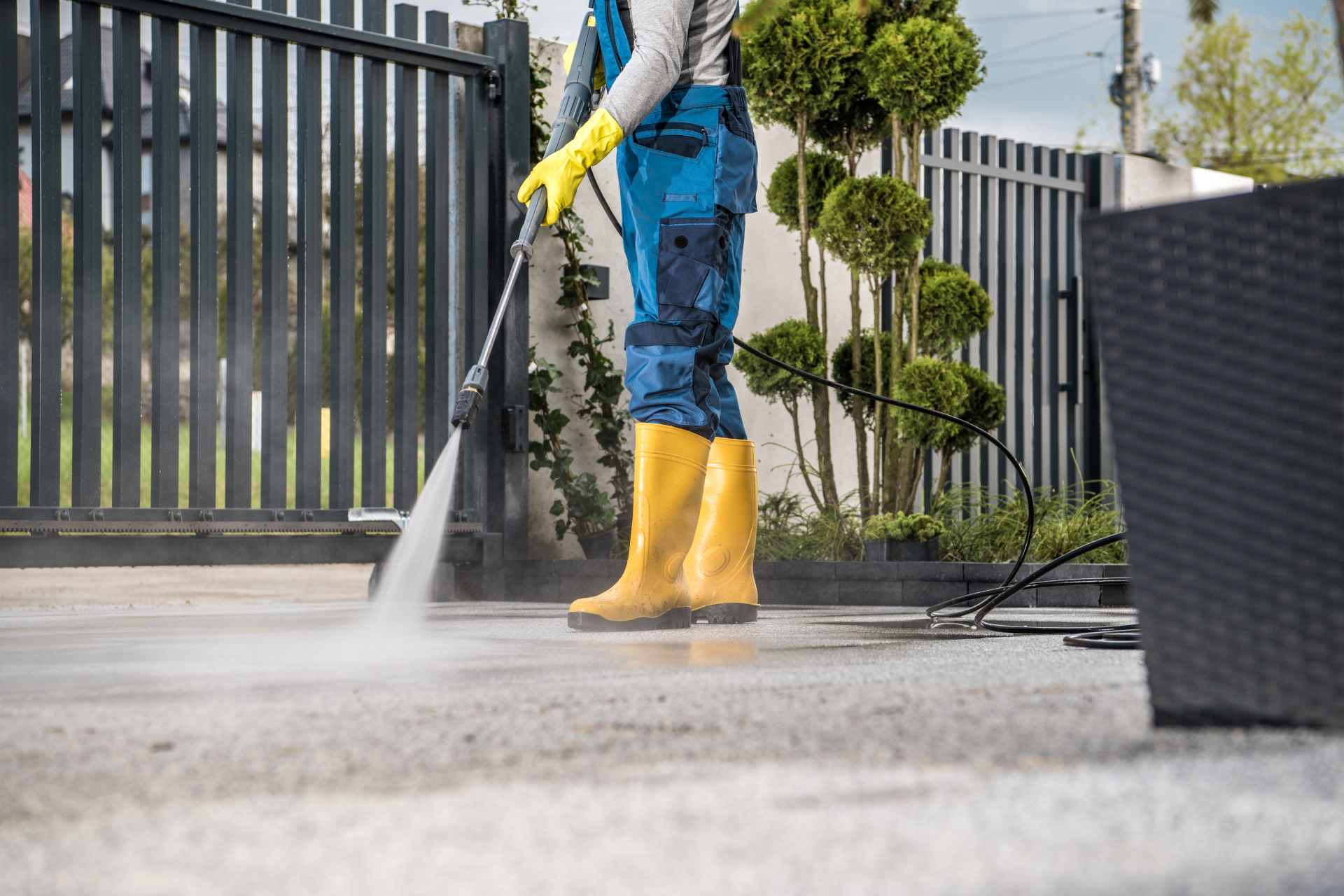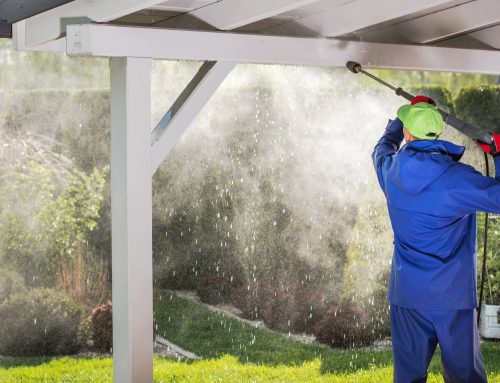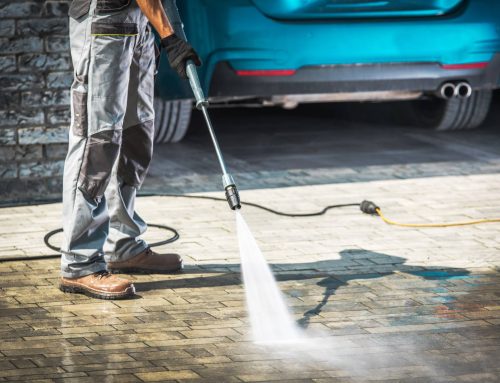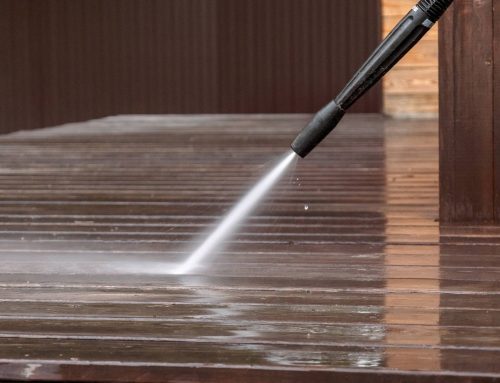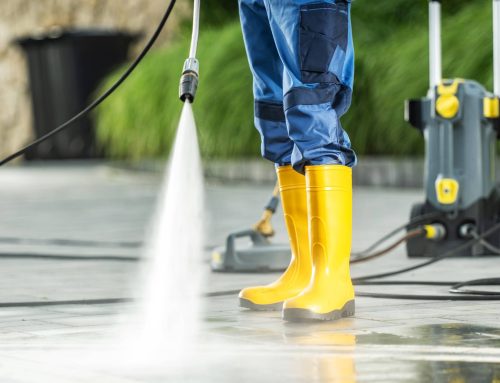Whether it’s for your deck, fences, driveway, or exterior, residential power washing can enhance your home’s curb appeal by effectively removing dirt, grime, mold, mildew, and other unsightly stains from these surfaces. Power washing can remove stubborn stains and revitalize the appearance of your home, giving it a fresh and well-maintained look.
Here are some techniques for a successful residential power washing experience:
1. Start with Low Pressure
Begin by using low pressure and gradually increase pressure as needed. Low pressure reduces the risk of damage to surfaces, particularly delicate ones such as wood, vinyl siding, and painted surfaces. It is often sufficient for removing light dirt, dust, and debris. Using high pressure right away can lead to etching, gouging, or stripping of paint, causing irreversible damage. By starting with low pressure, you can gauge the effectiveness of the cleaning process and adjust as necessary to achieve optimal results.
For some surfaces, such as siding and roofing, using high pressure without the appropriate technique and expertise can force water behind them, leading to water intrusion, mold growth, and structural damage. Furthermore, high pressure water can cause injury to both people and pets. Starting with low pressure helps mitigate risks by allowing you to control the flow of water more effectively and minimize accidents and damages.
Starting with low pressure is a fundamental practice in power washing that promotes safety, protects surfaces from damage, and ensures effective cleaning results.
2. Maintain Proper Distance
The distance at which the nozzle is help determines the intensity and coverage of the spray. By maintaining the optimal distance, you can maximize cleaning efficiency, removing dirt, grime, and other contaminants more effectively.
Keeping a consistent distance between the pressure washer nozzle and the surface being cleaned helps prevent damage. If the nozzle is held too close, especially with high pressure settings, it can cause gouging, etching, or other forms of surface damage. Maintaining the correct distance helps prevent streaking and missed spots and ensures that the surface is evenly cleaned. Conversely, holding the nozzle too far away may result in ineffective cleaning. Holding the nozzle at the proper distance minimizes overspray, which can lead to wasted water. It can also help prevent adjacent surfaces from being inadvertently cleaned or damaged by the spray. Moreover, proper distance enhances safety during power washing. Holding the nozzle too close to the surface increases the risk of injury from flying debris while holding it too far away may result in reduced control over the spray and potential accidents.
Maintaining the proper distance when power washing ensures effective cleaning, prevents damage to surfaces, maximizes efficiency, and promotes safety for both the operator and surrounding areas.
3. Work in Sections
Divide the area to be cleaned into manageable sections and work on one section at a time. Working in sections provides better control over the cleaning process. It allows you to concentrate your efforts on smaller areas, ensuring that each section is cleaned properly before moving on to the next. This control helps prevent rushing through the cleaning process and ensures higher quality results. It can help you ensure that every part of the surface receives proper attention and cleaning, reducing the likelihood of missed spots or uneven results.
Power washing can be physically demanding, especially for larger areas or tougher stains. Working in sections helps prevent overexertion by allowing you to take breaks between sections and avoid fatigue. It allows you to optimize your workflow by strategically planning the order in which sections are cleaned. You can start with areas that require the most attention or are easily accessible and then move on to more challenging or time-consuming sections. This approach helps streamline the cleaning process and maximize productivity. It can help you work more efficiently without feeling overwhelmed by the size of the job.
4. Use Angled Strokes
Angled strokes facilitate better dirt removal by allowing water to penetrate the surface at different angles. This helps dislodge stubborn debris and stains more effectively, resulting in cleaning surfaces with fewer residues. By directing the spray at an angle rather than straight on, you can increase your covering, reaching into crevices, corners, and other hard-to-reach areas more effectively. Furthermore, angled strokes help minimize streaking and uneven cleaning patterns. Varying the direction of the spray can prevent the buildup of dirt in certain areas, leading to more consistent results. Holding the nozzle at a 45-degree angle or slightly greater ensures that the water is directed away from the surface at an optimal angle, reducing the likelihood of gouging, etching, or other forms of damage.
Using angled strokes during power washing promotes better coverage, dirt removal, and surface protection, leading to more effective cleaning results and a higher quality finish.
5. Rinse Thoroughly
After cleaning each section, thoroughly rinse the surface with clean water to remove any remaining dirt and debris. Thorough rinsing is essential for achieving a clean and polished finish, as leaving behind residue can result in streaks, spots, or a dull appearance. It helps prevent staining by removing all traces of cleaning agents, if any, from the surface. Residual detergent left on the surface can attract dirt and other contaminants, leading to potential staining or discoloration over time. Rinsing helps prevent the buildup of cleaning solution, dirt, and debris on the surface. Accumulated residue can create an unsightly appearance and may harbour bacteria or mold growth if left unchecked. Finally, proper rinsing is essential for achieving a professional-looking finish. It ensures that the surface is clean, streak-free, and free from any residues that could detract from its appearance.
Your home is a significant investment, and proper maintenance is essential for preserving its value and appearance. Professionals have the expertise and experience to assess the specific cleaning needs of your home and determine the most appropriate power washing techniques, equipment, and cleaning agents to clean each surface safely and effectively.

